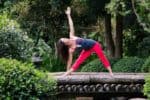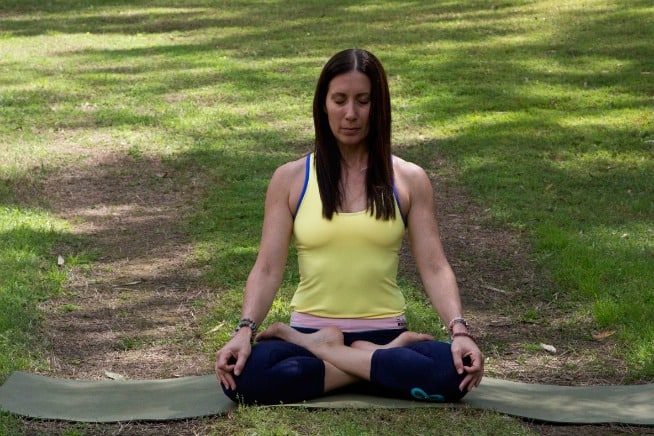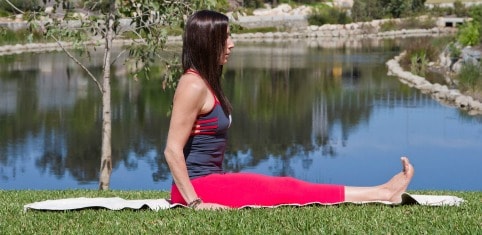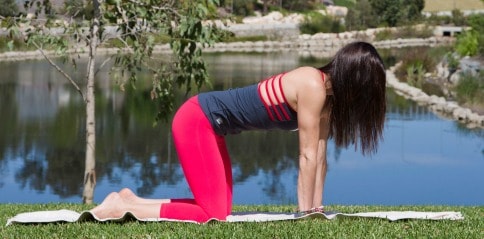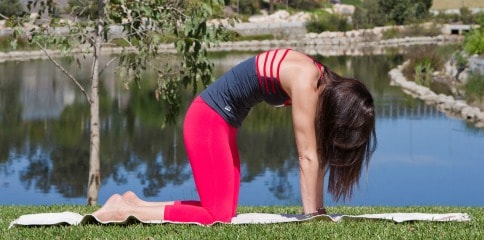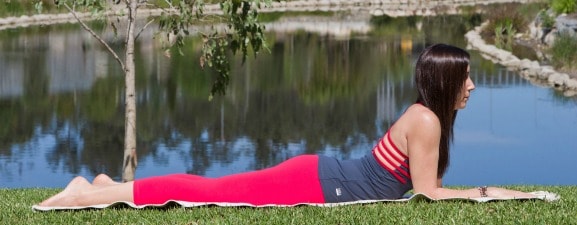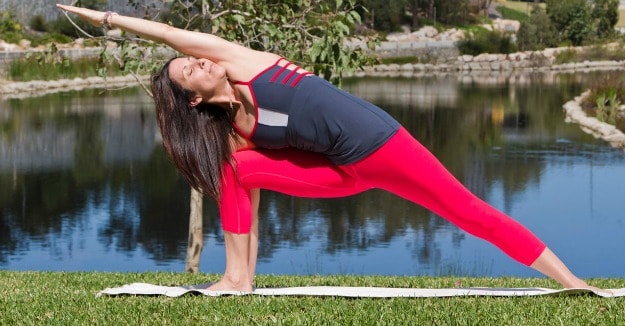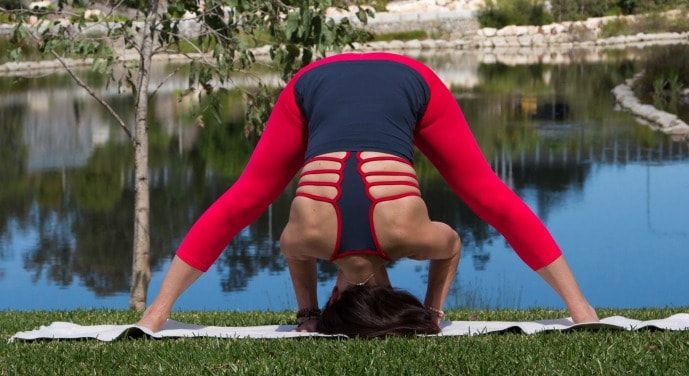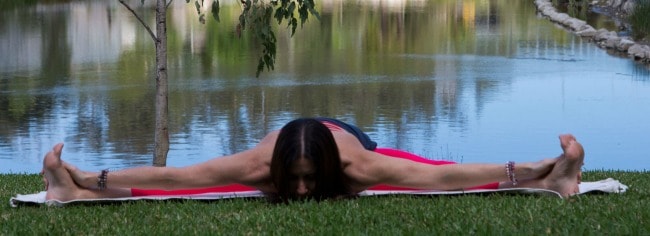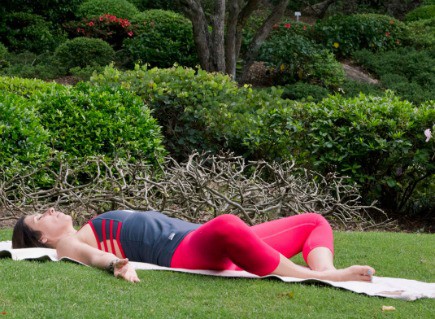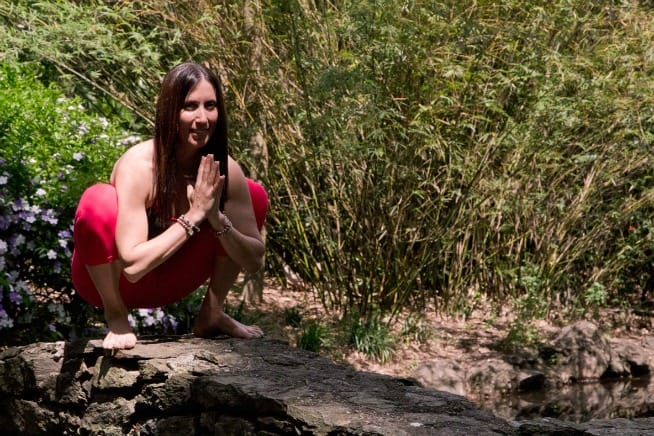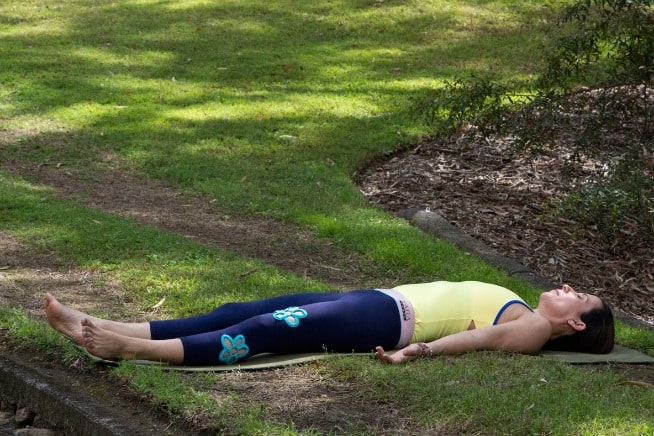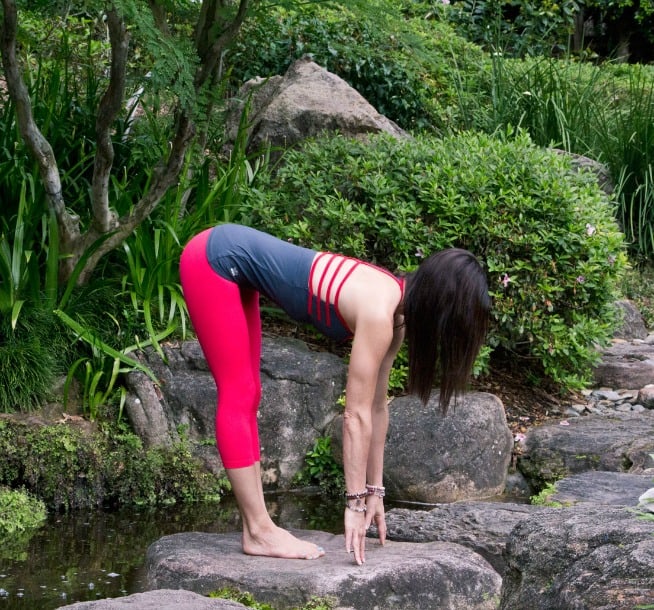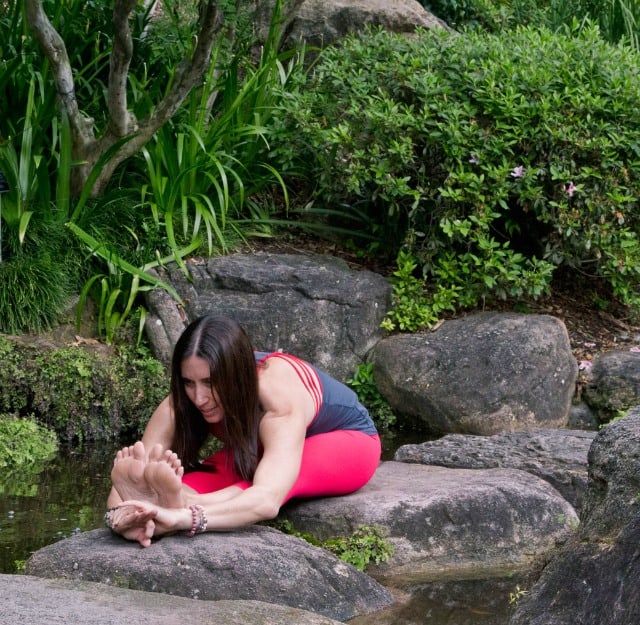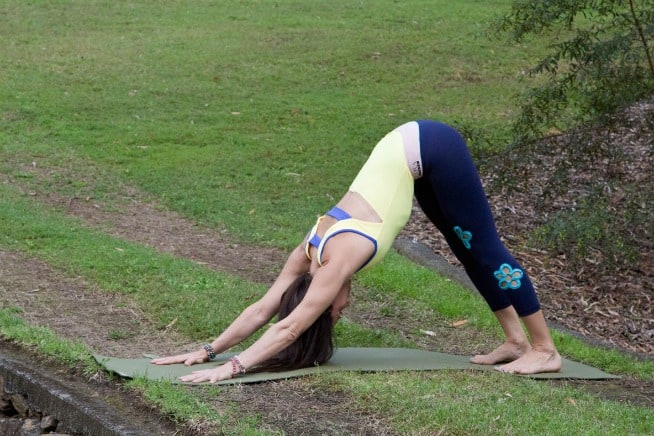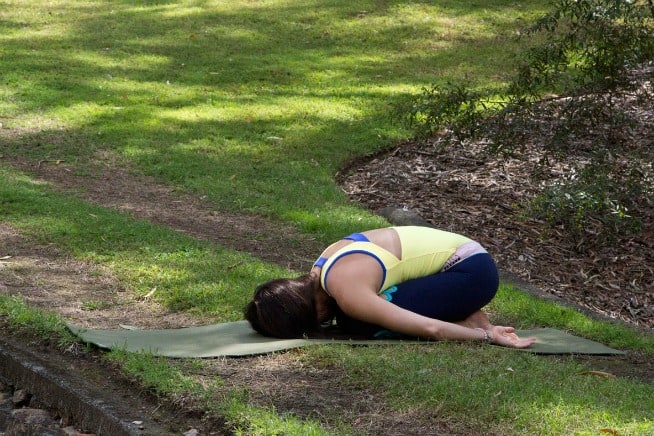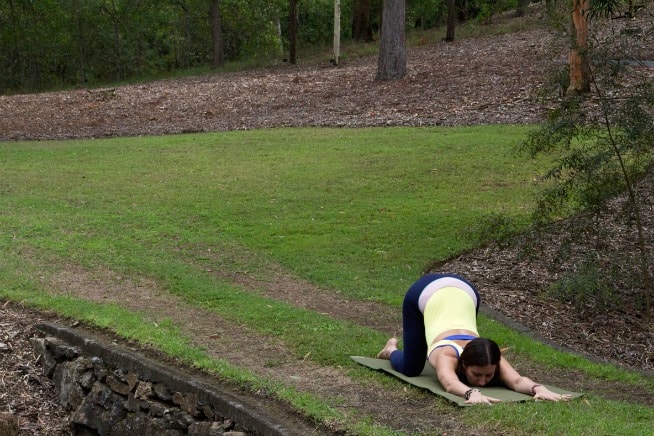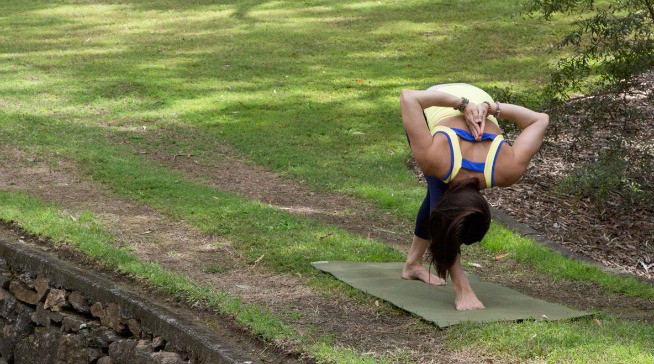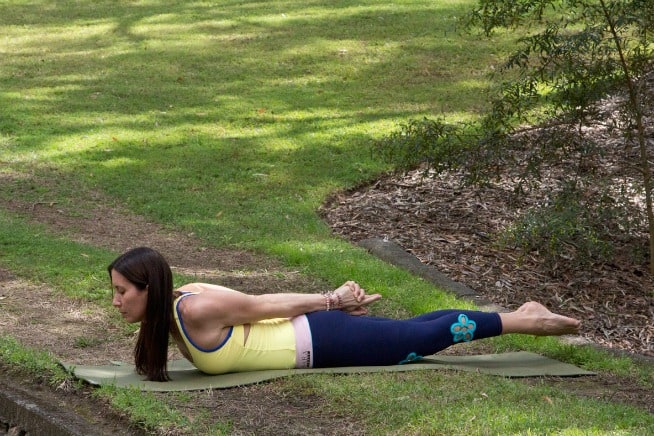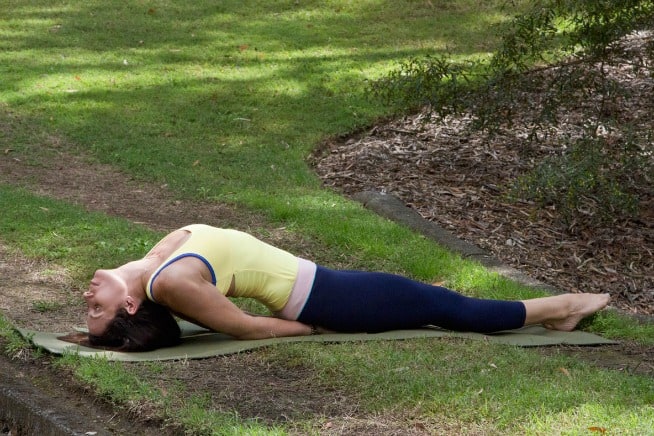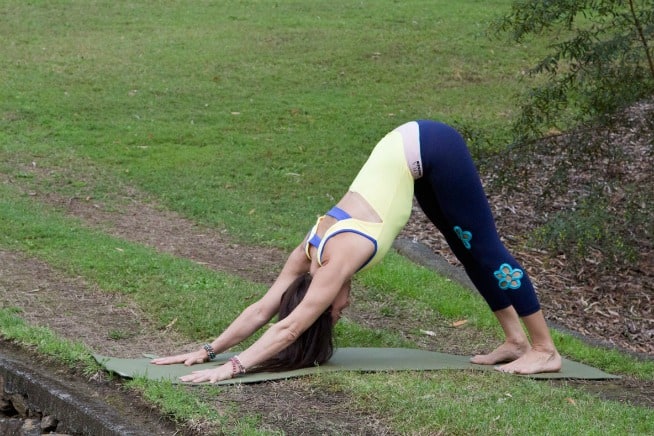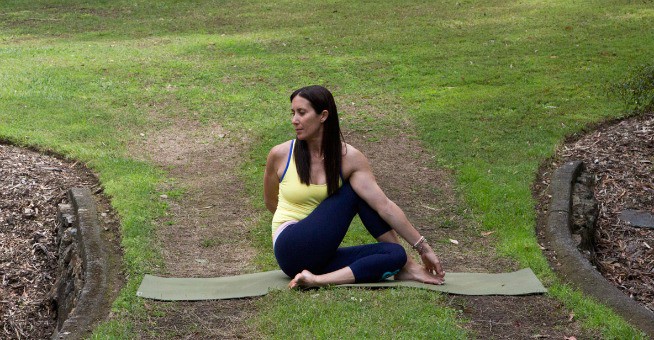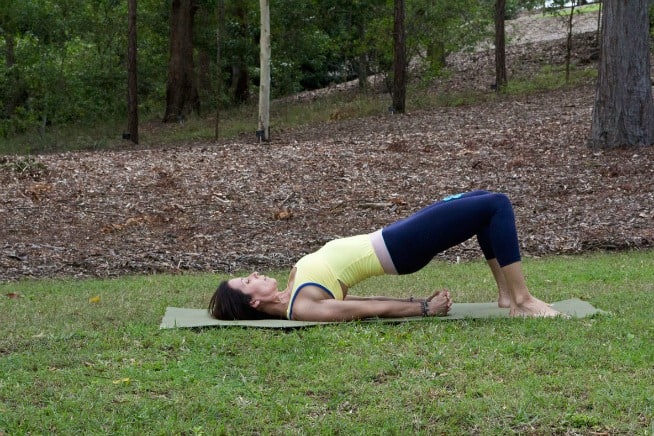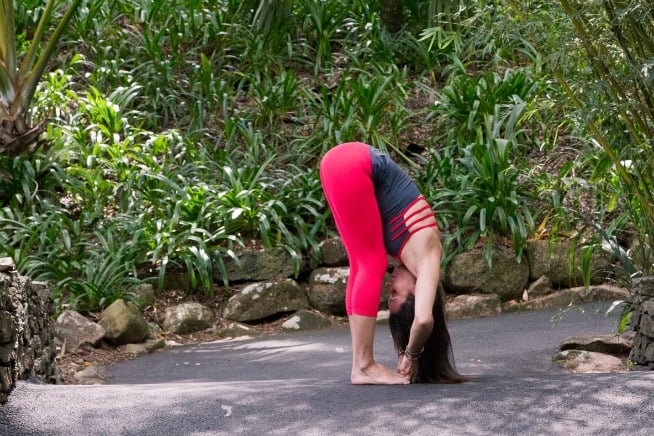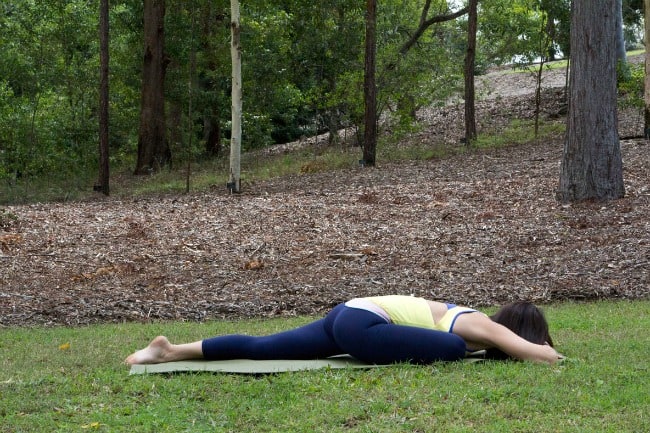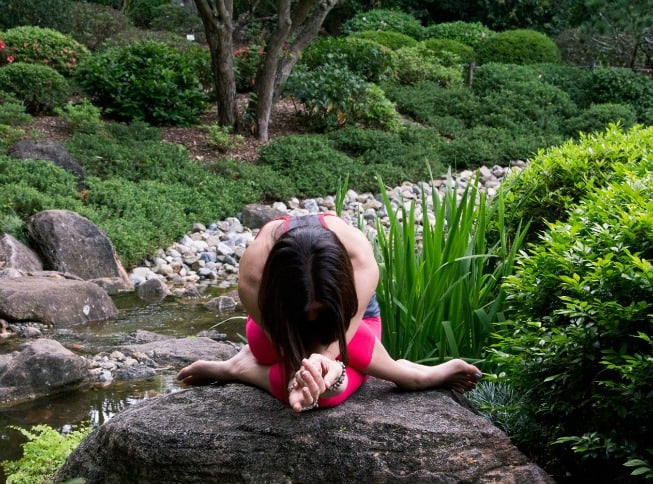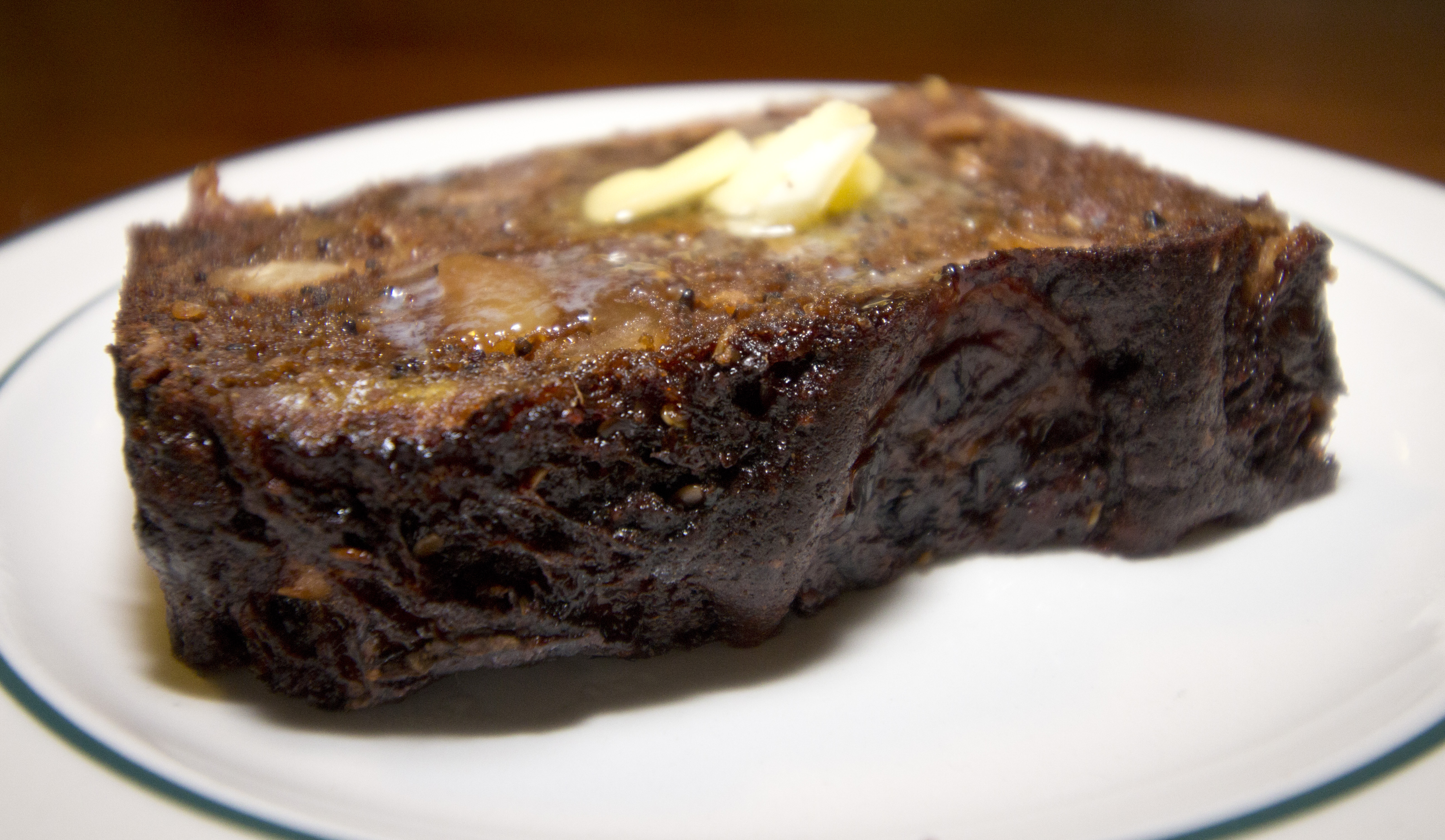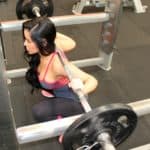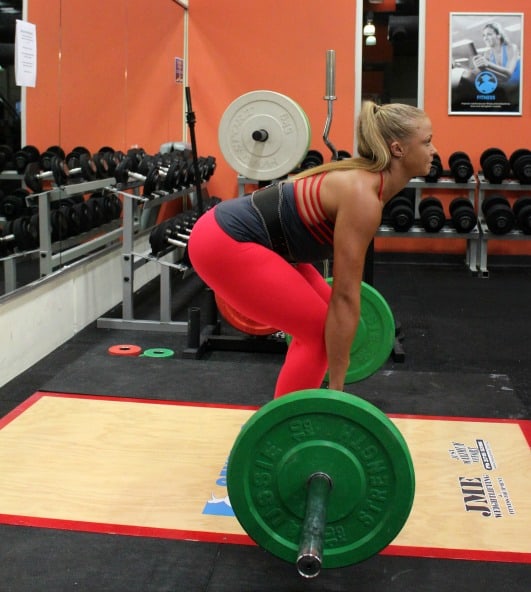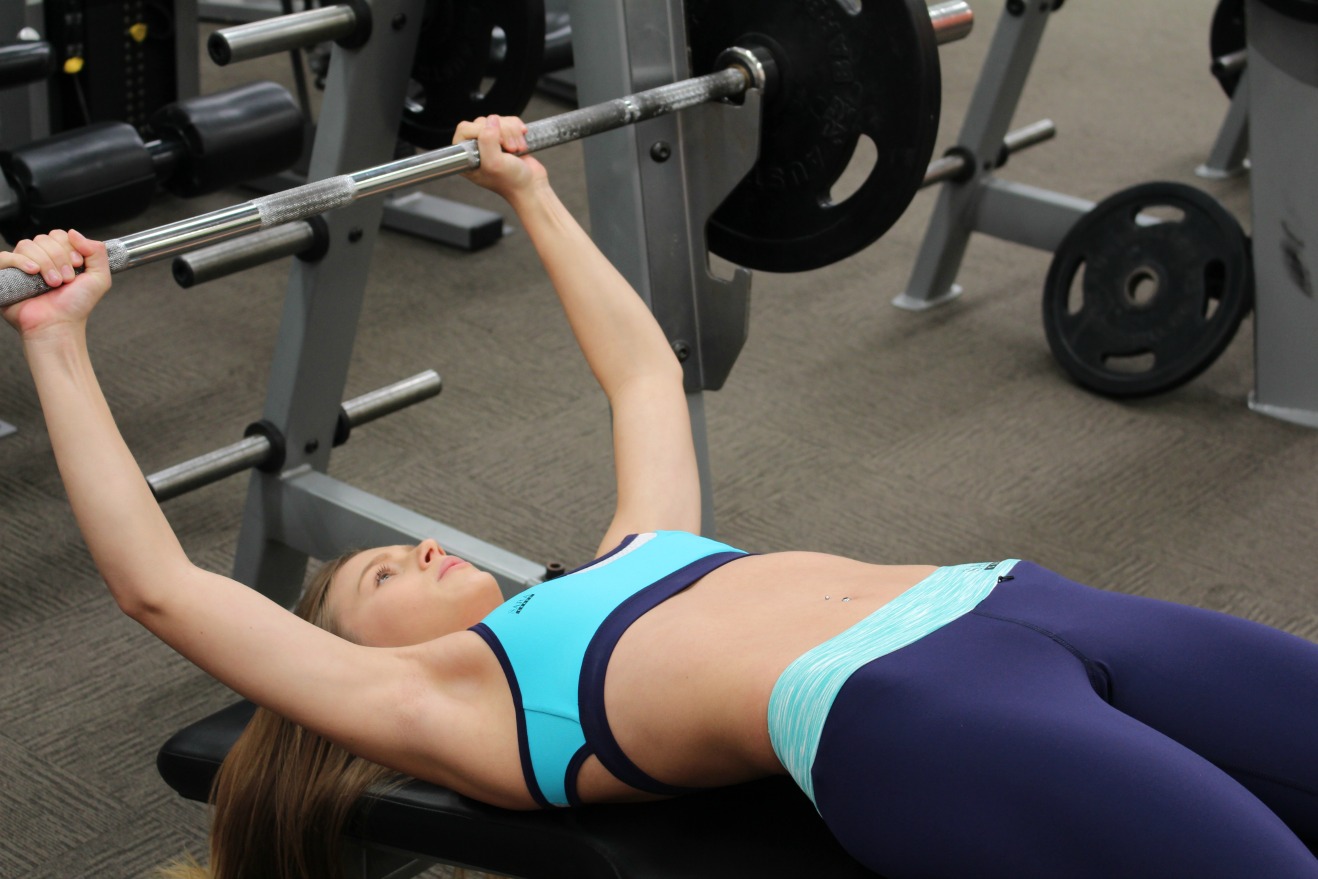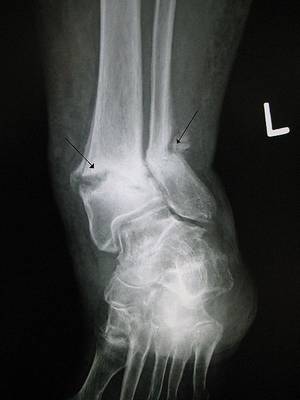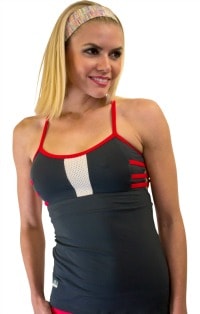If you have a back injury, you can do this pose with knees bent, or you can perform Ardha Uttanasana, which is a Half Standing Forward Bend.
There are many benefits to this pose and even when practiced by itself, it can give you some of these benefits.
However, when combined with other beginner yoga poses in a sequence, you can have an even greater experience and even more benefits.
Some of these benefits include mindfulness, improved digestion, and relief for insomnia and headache.
It can also help with high blood pressure, asthma, osteoporosis, sinusitis, and infertility.
Over time, it will reduce fatigue, anxiety, and the symptoms of menopause.
Physical results include strengthening of the knees and thighs, stretching of the hips, calves, and hamstrings, and stimulation of the kidneys and liver.
Seated Forward Bend - Paschimottanasana
Because you are laying on your stomach for this pose, it should not be practiced during pregnancy.
Also, because of the backward stretch of the back, it shouldn't be done if you have a back injury unless you have been told it is okay by a doctor or physical therapist.
It's not recommended for anyone with Carpal Tunnel Syndrome or a headache.
Even though there are some limitations to this pose, there are many benefits if you are able to do it.
It strengthens the spine and firms the buttocks.
While stretching your lungs and chest, plus your shoulders, you will open your lungs and heart, therefore this pose is sometimes used to help open airways for those with asthma.
Cobra Pose stimulates the organs of the abdomen and relieves fatigue and stress with the way it brings oxygen into the body and stimulates the organs.
Plank Pose
Planks have gotten some trendy exposure lately as a great fitness regimen, and it is.
However it is a yoga pose and using the mindfulness and breathing techniques as well can make it even more effective not only physically, but also mentally and spiritually.
Because you will be spending time on your hands, it is not recommended for people with Carpal Tunnel Syndrome.
Plank Pose, when done regularly will show you a more tone abdomen and it will help you strengthen your spine, wrists, and arms.
Happy Baby Pose - Ananda Balasana
With the knees brought to your chest the way they are in this pose, it should not be practiced during pregnancy or if you have a knee injury.
If you have a neck injury, place something soft under the head and neck for support.
This pose gently stretches and relaxes the inner groins and the spine.
It helps reduce fatigue as well as stress and anxiety. This is an excellent pose in which to practice deep mindfulness.
Low Lunge - Anjaneyasana
This is a pose that should not be practiced if you have heart problems, but it is oftentimes used to help those who have Sciatica.
This pose helps to improve balance, both mentally and physically, and works the buttocks, thighs, hamstrings, and more.
You will also stretch and lengthen your hip flexors which is great for those who sit down most of the day at work or school.
High Lunge - Utthita Ashwa Sanchalanasana
Just like with the Low Lunge, you should not do this one if you have heart problems.
But again, this lunge is used in therapy with Sciatica as it has been shown to improve symptoms.
With this pose, you will also work on your hip flexors.
Both of these lunges can be done easily in a hall (or in your office, if it's big enough) a few times throughout the day to make sure you keep limber and so that you don't end up having hip and back problems later on from a job where you sit much of the time.
Standing Half Forward Bend - Ardha Uttanasana
This pose is safe for pretty much anyone; however, if you have a neck injury, do not lift your head to look forward or to the sides (keep the head in line with the torso and in a neutral position).
This pose stimulates the belly, meaning it can aide in digestion and get other abdominal organs and muscles working.
It stretches the front of the torso and strengthens the back which can lead to improved posture.
Root Bond - Mula Bandha
The root bond – one of three bonds in yogic practice – allows the spine to support the sitting position in a much better way so that when you are in any sitting pose, you can be centered and balanced.
Shown here in downward facing dog (Adho Mukha Svanasana) focus on contracting the muscles at the bottom of the pelvic floor, behind the cervix.
Garland Pose - Malasana
If you have a lower back injury, or injuries to your knees, this pose can be difficult and should not be done if it causes you any discomfort, especially pain.
Besides toning the belly muscles, you will also be stretching the back of the torso, the groins, and the ankles with the Garland Pose.
Extended Puppy Pose - Uttana Shishosana
Because you are kneeling in this pose, it's not recommended for anyone with a knee injury.
However, if you'd like to try it, you can try kneeling on a prop, folded towel, or thickly folded blanket.
If it causes discomfort, please discontinue.
This pose stretches the shoulders and the spine which can lead to improved posture over time.
Lion Pose - Simhasana
If kneeling to do this pose, be careful if you have a knee injury.
This pose can also easily be adapted to be practiced in a chair. There are several unique benefits to Simhasana.
According to ancient Indian texts, this pose helps to destroy diseases in the body and helps with the three bandhas, which are Uddiyana, Jalandhara, and Mula.
This pose helps to keep the platysma (a rectangar-shaped muscle that is flat and thin and sits at the front of the throat) firm as we age.
This helps to prevent wrinkles around the mouth, cheeks, and neck. You will also see a release of tension in the face and chest.
Intense Side Stretch - Parsvottanasana
With high blood pressure or back pain/injury, instead practice Ardha Parsvottanasana, which is half of this pose.
This pose is often used to treat flat feet and the discomfort associated with it.
The Intense Side Stretch is very good for mindfulness as it calms the brain.
It strengthens the legs while it also stimulates and massages the abdominal organs which can lead to improved digestion.
When done regularly, this pose will improve posture, give you a sense of balance and coordination, and also stretch many areas of the body, including the: hamstrings, hips, wrists, shoulders, and spine.
Locust Pose - Salabhasana
If you have a headache or a serious back injury, this pose is not recommended.
If you have a neck injury, it is possible to practice this pose (as long as it is comfortable to do so), but the head should remain neutral by looking at the floor instead of straight ahead.
You may find it easier to support your forehead on a prop or a folded towel or blanket.
The Locust Pose has been used to treat lower-back pain and fatigue for quite some time.
It is also used to treat digestion problems such as indigestion, constipation, and flatulence.
When practiced regularly, you can see improved posture because you will be stretching the muscles of the thighs, belly, chest and shoulders, while also strengthening muscles in the legs, arms, buttocks, and spine.
Because of the stretch in the belly, the abdominal organs will be stimulated. This pose also helps to reduce stress.
Heron Pose - Krounchasana
This pose should not be practiced if you are menstruating.
You can simply replace it with a more appropriate pose that will help with that during that time.
Also, if you have an ankle or knee problem, this pose will be very difficult and may cause more problems so ask a doctor or experienced yoga instructor before practicing this.
The Heron Pose is therapeutically used to treat flatulence and flat feet. It both stimulates the heart and abdominal organs, but it also stretches the hamstrings.
Fish Pose - Matsyasana
You must be very careful practicing this pose if you have any of the following: low or high blood pressure, insomnia, a migraine, or a serious neck or lower back injury.
Other than basic benefits, which are listed below as well, this pose has many therapeutic uses.
It can help with menstrual pain and mild backache (which may also be a symptom of menstrual pain) or constipation.
It can help with respiratory ailments because it opens up the chest.
It can help with fatigue and anxiety.
The Fish Pose does a lot of stretching in the body, including the deeper hip flexors and the muscles that are between the ribs (which is what helps to open up the chest), the belly as well as the neck, and it strengthens the upper back and back of the neck.
All of this stretching and strengthening can lead to improved posture when practiced regularly.
Some ancient texts say that the Matsyasana is the "destroyer of all diseases."
Legs-Up-The-Wall Pose - Viparita Karani
This is an inversion pose and because of that, it should be avoided if you have serious eye problems, such as glaucoma.
As we were doing these poses outdoors, there aren't any handy walls around to rest the legs against, so the pose here is more like a shoulder stand, Salamba Sarvangasana. You would normally rest your legs against a wall, with your back flatter on the ground. You could try to find a tree if you're practicing yoga out in nature too, as long as you have flat ground at it's base too.
There are many therapeutic uses with the Viparita Karani.
It can help with menopausal symptoms as well as menstrual cramps and PMS.
It helps with both regular headaches and migraines.
Mentally, it can help with anxiety and mild depression.
It can help relieve digestive problems as well as issues with low and high blood pressure.
Insomnia, respiratory problems, and varicose veins are just a few of the other benefits.
If you stand on your feet for much of the day, this pose will help to relieve cramped feet and legs, rejuvenating them as well as your back.
It also gently stretches the back of the neck, the front of the torso, and back of the legs.
Cow Face Pose - Gomukhasana Twisted
If you have serious shoulder or neck problems consult a doctor or an experienced yoga instructor before practicing this pose.
This pose stretches the chest, the triceps and armpits, the shoulders, the thighs and hips, as well as the ankles.
Overall, this is a great pose for getting a nice stretch.
If you can't reach your fingers behind your back, you can use a strap to do that until your shoulders are limber enough to reach. It could take time so don't push yourself.
Warrior II Pose - Virabhadrasana II
When you have high blood pressure or are suffering from a bout of diarrhea, this pose should not be practiced.
If you have a neck problem, do not turn your head. Instead, look straight and keep the head neutral.
Other than increased stamina, you will see a stretch in the groins, lungs and chest, as well as shoulders.
This pose strengthens the ankles and legs, as well as stretches them.
Throughout the second trimester of pregnancy, this pose can relieve backaches, but it is also therapeutic for flat feet, Carpal Tunnel Syndrome, osteoporosis, Sciatica, and infertility.
Tree Pose - Vrksasana
The Tree Pose should not be done if you have a headache or insomnia.
You also shouldn't do it if you have low blood pressure but you can do it if you have high blood pressure, just don't raise your arms over your head.
This pose strengthens the legs and the spine while also stretching the inner thighs and groins, shoulders and chest.
Because this pose is done on one foot, you will see an improved sense of balance over time. It is therapeutic for flat feet and Sciatica.
Downward Facing Dog - Adho Mukha Svanasana
If you have Carpal Tunnel Syndrome or have diarrhea, do not practice this pose.
If you are pregnant, you can practice Downward Facing Dog up until you are considered late term, or it becomes uncomfortable for you, whichever comes first.
If you have a headache or have high blood pressure, you should support your head on something placed between the arms.
This pose helps to energize the body and calms the brain so it can help to relieve stress and depression.
It stretches the hands, arches and calves, hamstrings and shoulders, plus it strengthens the legs and arms which is great for toning those muscles.
The Downward Facing Dog helps to relieve symptoms of menopause, and when the head is supported as described above, it can relieve menstrual cramps.
It helps to prevent osteoporosis, or the worsening of it if it has already started, and it aides in digestion.
This pose is therapeutic for sinusitis, flat feet, high blood pressure, Sciatica, fatigue, insomnia, back pain, and headache.
Half Lord of the Fishes Pose - Ardha Matsyendrasana
If you have a spine or back injury of some sort, only practice this pose with the help of an experienced yoga instructor.
This pose stimulates digestion, the liver, and the kidneys.
It also helps to get things moving with the spine so it doesn't stiffen.
When performing this pose you will stretch the neck, hips, and shoulders. Therapeutic uses for Half Lord of the Fishes Pose include relieving menstrual cramps, Sciatica, backaches, fatigue, infertility, and asthma.
Bridge Pose - Setu Bandha Sarvangasana
If you have a neck injury, make sure you have an experienced yoga instructor present.
This pose stretches the spine, neck, and chest while also stimulating the thyroid, lungs and abdominal organs which can lead to improved digestion.
Bridge Pose can aide in mindfulness which helps especially with mild depression and stress.
If you have tired legs, are going through menopause, menstrual discomfort, insomnia, headache or backache, anxiety or fatigue, sinusitis or asmtha, osteoporosis, or even high blood pressure this pose can help.
Four Limbed Staff - Chaturanga
Be careful with the Four Limbed Staff Pose if you have a wrist or shoulder injury.
This yoga pose strengthens your wrists and arms, as well as your abdomen.
This is a great pose to practice in preparation for other poses where you will be balancing on your arms.
Standing Two-Legged Forward Bend - Standing Paschimottanasana
If you have a back injury only bend forward as much as is comfortable.
If you have a neck injury, be certain to keep your neck in a neutral position and don't look forward.
The benefits of this Forward Bend include stretching the backs of the legs as well as teaching patience and mindfulness.
Pigeon Pose Head Down - Adho Mukha Kapotasana
Because you will be folding one leg under your body, this should be done with the presence of a yoga instructor or with permission of a doctor If you have a hip or knee injury.
The Pigeon Pose opens the hips and stretches the fronts of the thighs.
This can be great for people who mostly sit during the day.
Lotus Pose - Padmasana
This pose opens the hips which is another great pose for those who sit much of the day.
However, this pose is mostly meant as one used for meditation and mindfulness.
Warrior III - Virabhadrasana III
This is another pose in which you will be standing on one foot so if you have any reason to believe your balance may be compromised, such as if you have low or high blood pressure, a lack of regular sleep, or a headache, then you should not practice this pose.
However, the Warrior III gives benefits of strength to the legs, core, and arms, as well balance over time, plus it helps you to focus.
Cow Pose - Bitilasana
Because this pose releases the muscles surrounding the spine, if you have a back injury, you may want to consult your doctor before practicing this pose.
However, this pose is great for relieving tension along the spine, helping with backaches and tension.
Upward Facing Dog - Urdhva Mukha Svanasana
Upward Facing Dog shouldn't be done by anyone with a back injury as you are inverting the spine.
However, there are other yoga poses that can help you increase flexibility in your back so that you can get to the point of being able to practice this pose if your back allows it.
This is a chest opening pose so it can help with respiratory problems.
It also stimulates the abdominal organs and relaxes the spine.
Shoulder Stand - Salamba Sarvangasana
This is an inversion, so once again, if you have serious eye problems this shouldn't be done.
Also, your weight will be on your neck and shoulders, so if you have injuries or pain in those areas get clearance from your doctor.
However, this inversion is great for circulation which can be great for people who aren't as active as they should be or suffer from poor circulation.
It also opens up the back and the neck to help stretch those related muscles.
Butterfly Pose - Badhakonasana
Because you will be stretching your hips and lower back with this pose, only let your knees relax as far into the pose as is comfortable for your hips, and only lean forward as much as is comfortable for your back.
This pose is great for mindfulness and meditation sitting. As mentioned, it opens the hips which is great for people who sit much of the time.
Enjoy creating your own routine with these beginner yoga poses
Apart from the many physical benefits, yoga can be really relaxing and a great stress reliever.
Apart from the many physical benefits, yoga can be really relaxing and a great stress reliever.
Click to Tweet
There are lots of great yoga studios around, but perhaps you could try getting out in nature, doing some meditation and some of these easy yoga poses to relax.
Many thanks to our yogi Kerri McCubben for her help in taking me through these poses. That's her in all the images:)
Having studied in the spiritual home of yoga, India, and being a qualified raw yoga instructor Kerri is a great teacher.
You can follow Kerri on her web site for some great inspiration at Home Of Yoga New Farm
I hope you have fun and enjoy pursuing yoga.
Please feel free to share any other easy yoga poses which you enjoy, and think others might too, in the comments below.



